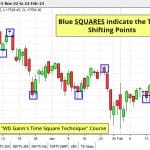Day trading may seem like a way to get rich quickly in the stock market, but many day traders suffer a rude awakening.
There are big risks to consider
There are several definitions of the term “day trader,” but for the purposes of this article, I define day traders as people who enter and exit stock positions frequently in order to profit from the short-term movements in a stock’s price. Some hold positions for hours, while others hold stocks for minutes or even seconds at a time.
According to a research report published by several university professors, only about 13% of day traders earn a net profit in any given year. Even worse, less than 1% of day traders are consistently profitable year after year. Why are these numbers so atrocious? Two main reasons: taxes and commissions.
Taxes on investment profits are separated into two categories: long-term and short-term capital gains. Long-term capital gains are profits on investments held for more than a year, and they’re taxed at a lower rate than short-term profits, which are taxed at the investor’s ordinary income-tax rate.
Even worse than taxes for day traders are commissions, which can be a sneaky cost of trading. After all, if you’re trading tens of thousands of dollars’ worth of stock at a time, a $10 trading commission may not seem like much.
To illustrate this, consider an example of a trader who enters and exits 30 trades in the average day. Well, at $20 per round-trip trade ($10 each when they buy and sell) and approximately 250 trading days per year, this adds up to a staggering $150,000 in commissions over the course of a year. In other words, you would need to earn trading profits of $150,000 just to break even.
Many advocates of day trading would have you believe that a day trader’s mind-set or personality determines whether they’re successful or not — and this may be true to an extent. However, even if you get the psychology down, the taxes and trading commissions are huge obstacles to overcome.
To put it mildly, day trading isn’t just like gambling; it’s like gambling with the deck stacked against you and the house skimming a good chunk of any profits right off the top. When you think about it, it’s no wonder only a tiny percentage of traders actually overcome these terrible odds on a regular basis
Why long-term investing is the way to go
It’s true that in any given year, the stock market can take a nosedive and wipe out a chunk of your portfolio’s value. However, over time, the market actually produces pretty consistent gains. Historically, the S&P 500 has rewarded investors with total returns averaging about 9.5% per year — even when factoring in the bad years.
Let’s say you have $10,000 per year to invest. Instead of day trading, if you simply put your money in a S&P 500 index fund and leave it alone, you can expect to have nearly $1.5 million in about 30 years, based on the index’s historic performance.

The bottom line
The only consistent way to become rich in the stock market is to buy high-quality stocks and hold them for the long term.
So, if you’re considering investing, don’t buy into the day-trading hype. Instead, remember that slow and steady is the way to go, and the vast majority of day traders will lose — even when the market goes up.










